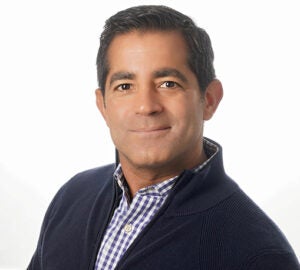 Hear the birds chirping?
Hear the birds chirping?
No, not those birds.
On Monday, the Worldwide Web Consortium (W3C) working group for digital advertising standards had its first call where it discussed a new privacy proposal by Criteo called SPARROW (Secure Private Advertising Remotely Run On Webserver), according to three sources who participated.
The SPARROW proposal is a response to Google’s privacy framework called TURTLEDOVE (Two Uncorrelated Requests, Then Locally-Executed Decision On Victory), which replaced a first effort called PIGIN (Private Interest Groups, Including Noise).
None of these are real-world technologies yet. They’ve been added to the Google privacy sandbox, where the Google ads and Chrome teams are testing advertising and privacy technologies for when the browser deprecates third-party cookies in about two years.
Google is open to enhancements of its TURTLEDOVE framework, but said SPARROW doesn’t meet its privacy standards, according to people on the call.
But SPARROW is a starting point, not a finished product, said Arnaud Blanchard, Criteo senior analytics and product manager. “This is a case where we’ll be happy if these ideas are stolen for other proposals moving forward.”
Benefits of a SPARROW over a TURTLEDOVEThe major change Google proposed with TURTLEDOVE is that all the logic and decisioning power that is built into RTB auctions would happen inside the browser, not in servers operated by SSPs, exchanges or publishers.
A browser running on the TURTLEDOVE framework could allow targeting based on interest groups (for example, if an advertiser and publisher share common audience segments) or contextual information about the site, without user-level data being exposed to either side.
TURTLEDOVE would also disable many common web advertiser tactics, such as A/B testing, attribution and optimization for metrics including click-through rates and conversions. In other words, techniques that rely on the ability to track consumers across the web.
Even tag-based tech for brand safety and fraud controls would be amiss, said Criteo CTO Diarmuid Gill.
Also, storing all that auction logic inside the browser would strain the bandwidth and computational power consumed by ad tech, particularly on mobile devices. Servers can process huge amounts of data, but data on a phone is limited by Wi-Fi, cell service and available device storage, said Bosko Milekic, who was head of engineering for Samsung Ads until late last year. (He co-founded and was CTO of AdGear until 2016, when it was acquired by Samsung.)
Complex auction logic isn’t possible with the TURTLEDOVE proposal, Milekic said. Even not-so-complex segmentation, such as merging two interest groups to create a more nuanced audience segment, isn’t possible, he said. Aside from TURTLEDOVE’s on-device software having less data available, browser operators don’t want highly targeted audience segments that could be honed down to create profiles of users.
And because TURTLEDOVE browsers wouldn’t return a live data feed on ad auctions, publishers and ad platforms like Criteo would get aggregate reports from the browser on the impressions they won, every few hours or even once per day.
Gill said that would be a big problem for Criteo, which optimizes in real time and could easily end up over or under its budgets, since it would have to place thousands of bids without knowing the number of impressions it already won and at what rates.
Can SPARROW work?
The SPARROW proposal puts control over bidstream data and auction logic with an independent third party, what Criteo is calling “the gatekeeper.” That gatekeeper could be an industry organization, or an SSP that already runs ad auctions and has direct compacts with publishers, Gill said.
These gatekeepers would be trusted clearinghouses for auctions and personal data, enabling data-driven tactics with higher privacy standards, similar to Google’s cloud-based clean room, Ads Data Hub.
But Criteo’s proposal and its ecosystem supporters don’t meet the privacy-by-design standards that browser operators and privacy advocates consider a baseline, said Paul Bannister, CafeMedia’s chief strategy officer.
The gatekeeper would create a data trove that could theoretically be hacked to reveal personal information, and data could possibly be used improperly for competitive reasons. An SSP could favor its suppliers or a preferred DSP – especially now that DSPs and SSPs are often under the same roof, such as with Xandr, Roku, Comcast’s Freewheel or integrations between independent companies, such as MediaMath’s SOURCE partnership with Rubicon Project.
These hypothetical problems could be enough to put SPARROW to rest. And it would require firewalls between accounts like financial services firms have, Bannister said.
The ecosystem effort
Regardless of whether the industry adopts the ideas in the SPARROW proposal, Gill said Criteo wants the ad tech ecosystem and publishers to be involved, so new online advertising standards aren’t controlled entirely by technical executives at browser companies.
The IAB may be home turf for ad tech, but the W3C is an increasingly important forum for that community. And its influential members also include browser operators and organizations that greatly prioritize privacy over advertising.
As browsers assert their control over advertising (the Intelligent Tracking Prevention tech created by Apple’s WebKit team, which operates the Safari browser, is one prime example), ad tech must learn to survive in an inhospitable landscape.
Zach Edwards, a digital media consultant who was commissioned by the Brave browser team for privacy research, said there’s “real math” behind the Apple WebKit team’s decision not to return attribution data until 24-72 hours, as a way to preserve individual privacy.
Similarly, he said Google’s TURTLEDOVE was the result of lawyers, strategists and product developers creating something that doesn’t expose the supply chain to legal risk.
By contrast, SPARROW is a “fantasy technical architecture that will never be deployed,” and is focused on resuming cookie-based tactics without regard for privacy laws or consumer trends.
SPARROW’s near real-time data feedback to demand platforms and publishers doesn’t account for any of the privacy concerns or rigorous data that other browsers put into their privacy frameworks, Edwards added.
Developments in these forums are very political, Bannister said. So Criteo’s efforts are more incremental and about the ecosystem making the case to browsers for advertising use cases, rather than actually moving SPARROW into a real-world framework.














